Whether you are a provider of Family Practice, General Medicine, Internal Medicine, or Pediatrics, there is one thing you have in common, your patients rely on you to take care of their physical health. To accomplish this, the primary focus is on collecting data about the bodies of the patients, either through a physical examination or review of diagnostic testing. Is our physical health, more than just how we look on the outside and pages of statistically compiled test results? Is there something else that makes us “feel” well or ill? How about our brains?

Yes, our brains. Mental health has become increasingly emphasized as a key factor that influences our physical well-being. One of the most common Behavioral Health issues is alcohol and drug addiction, which are known to have significant effects on physical health.
|
Although only 3% to 4% of screened patients in primary care settings typically need to be referred, the absence of a proper treatment referral will prevent the patient from accessing appropriate and timely care that can impact other psychosocial and medical issues. |
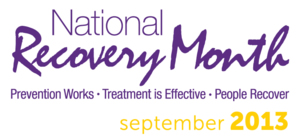
Since September is Alcohol and Drug Addiction Recovery Month, this is the perfect time to provide some useful information to assist primary care providers in the integration of this aspect of our physical health into their everyday practice.
The working definition of recovery is: A process of change through which individuals improve their health and wellness, live a self-directed life, and strive to reach their full potential.
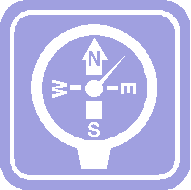 To get to recovery, the patient requires that initial screening and diagnosis. There is a comprehensive guide published by the Substance Abuse and Mental Health Services Administration (SAMHSA), within the U.S. Department of Health and Human Services (HHS), detailing a program referred to as: Screening, Brief Intervention and Referral to Treatment (SBIRT) in Behavioral Healthcare. Below I have provided some of the very basics to get you started withBehavioral Health screening.
To get to recovery, the patient requires that initial screening and diagnosis. There is a comprehensive guide published by the Substance Abuse and Mental Health Services Administration (SAMHSA), within the U.S. Department of Health and Human Services (HHS), detailing a program referred to as: Screening, Brief Intervention and Referral to Treatment (SBIRT) in Behavioral Healthcare. Below I have provided some of the very basics to get you started withBehavioral Health screening.
SAMHSAdefines a comprehensive SBIRT model to include the following characteristics:
1. It is brief (e.g., typically about 5-10 minutes for brief interventions; about 5 to 12 sessions for brief treatments).
|
Brief intervention as defined by the SAMHSA SBIRT program involves 1-5 sessions lasting 5 minutes to an hour. Among SBIRT grantees funded by SAMHSA, about 15% of patients receive scores that indicate a brief intervention. Brief treatment as part of SBIRT involves 5-12 sessions, lasting up to an hour. Among State SBIRT grantees funded by SAMHSA, about 3% of patients receive a score that dictates a brief treatment. |
2. The screening is universal.
This chart demonstrates how (the) universal screening helps identify the appropriate level of services needed based on the patient’s risk level.

3. One or more specific behaviors related to risky alcohol and drug use are targeted.
|
Some commonly used screens for the implementation of SBIRT for alcohol and drug use are the Alcohol Use Disorders Identification Test (AUDIT), Drug Abuse Screening Test (DAST), Alcohol, Smoking, Substance Involvement, Screening Test (ASSIST), and the Cut Down, Annoyed, Guilty, Eye-Opener (CAGE). |
4. The services occur in a public health non-substance abuse treatment setting.
5. It is comprehensive (comprised of screening, brief intervention/treatment, and referral to treatment).
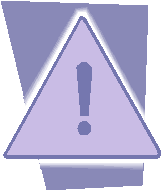 SBIRT methods can be translated into the screening for all forms of tobacco use, especially smoking. A recent study using data from the 2005-2006 National Survey on Drug Use and Health reported that adults with lifetime depression, anxiety, anxiety with depression, or major depressive episodes were more likely to be “current smokers, smoke with higher intensity and frequency, have more dependence, and have lower success at quitting” when compared to individuals without these psychiatric conditions (Trosclair & Dube, 2010).
SBIRT methods can be translated into the screening for all forms of tobacco use, especially smoking. A recent study using data from the 2005-2006 National Survey on Drug Use and Health reported that adults with lifetime depression, anxiety, anxiety with depression, or major depressive episodes were more likely to be “current smokers, smoke with higher intensity and frequency, have more dependence, and have lower success at quitting” when compared to individuals without these psychiatric conditions (Trosclair & Dube, 2010).
|
1. Ask about tobacco use. 2. Advise to quit through clear personalized messages. 3. Assess willingness to quit. 4. Assist to quit. 5. Arrange follow-up and support. |
Click here to go to a detailed article: “Medicare Covers Smoking Cessation”
Coding for SBI Reimbursement
Reimbursement for screening and brief intervention is available through commercial insurance CPT codes, Medicare G codes, and Medicaid HCPCS codes. Information regarding these codes can be found in the table below.
 Click here to go to a detailed article: “Alcohol Misuse Screening Covered by Medicare”.
Click here to go to a detailed article: “Alcohol Misuse Screening Covered by Medicare”.
|
Payer |
Code |
Description |
|
Commercial Insurance |
CPT 99408 |
Alcohol and/or substance abuse structured screening and brief intervention services; 15 to 30 minutes |
|
CPT 99409 |
Alcohol and/or substance abuse structured screening and brief intervention services; greater than 30 minutes |
|
|
Medicare |
G0396 |
Alcohol and/or substance abuse structured screening and brief intervention services; 15 to 30 minutes |
|
G0397 |
Alcohol and/or substance abuse structured screening and brief intervention services; greater than 30 minutes |
|
|
Medicaid |
H0049 |
Alcohol and/or drug screening |
|
H0050 |
Alcohol and/or drug service, brief intervention, per 15 minutes |
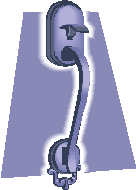 Once a patient has begun their behavioral health treatment, they open the door to their recovery. Recent progresses advancing the potential for a successful recovery are:
Once a patient has begun their behavioral health treatment, they open the door to their recovery. Recent progresses advancing the potential for a successful recovery are:
Availability of community coalitions, trauma-informed care, treatment drug courts, and offender re-entry programs has helped communities and families build resilience and helped people get the assistance they need.
Implementation of legislative changes such as the Mental Health Parity and Addiction Equity Act and the Affordable Care Act expand access to prevention, treatment, and recovery support services.
|
The Affordable Care Act prevents people with pre-existing conditions such as mental and substance use disorders from being excluded from coverage. |
You should think of health, home, purpose and community as the building blocks of a successful recovery. The following 10 principles are the “cement” that hold them together:
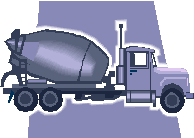 Hope, Person-Driven, Many Pathways, Holistic, Peer Support, Relational, Culture, Addresses Trauma, Strengths/Responsibility, and Respect.
Hope, Person-Driven, Many Pathways, Holistic, Peer Support, Relational, Culture, Addresses Trauma, Strengths/Responsibility, and Respect.
Click here to access the download page for SAMSHA’s free “Working Definition of Recovery” brochure.
Recovery for alcohol and drug abuse: SAMHSA reports treatment of admission data from substance abuse treatment facilities in its Treatment Episode Data Set2 (TEDS).
1. 1.8 million admissions in 2008 to facilities that report to State administrative data systems.
2. 41.4% of admissions involved alcohol abuse.
3. 20.0% were for heroin and other opiates
4. 17.0 % were for marijuana
|
In any given day, over 700,000 Americans seek treatment for alcohol or drug addiction. At least one-third of alcoholics fully recover. Using prescription drugs to combat alcohol dependency, in combination with treatment, boost the recovery success rate to 50 percent. There are an estimated 1.25 million Alcoholics Anonymous members in the U.S. There are more than 25,000 Narcotics Anonymous groups in the world. A majority of Americans (80 percent) have positive feelings about prevention and recoveryfrom substance use disorders. |


